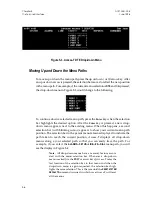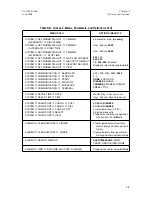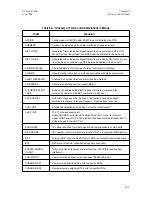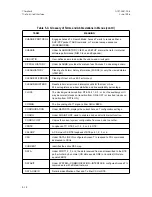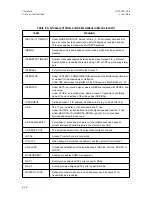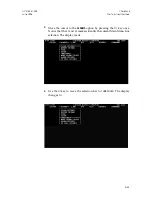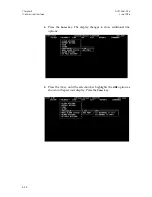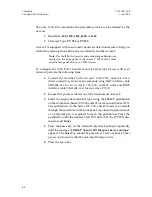
TERM
MEANING
MAX CONFIGURE
Maximum number of configure requests that can be sent from Access-T
without receiving an acceptable ACK response. (PPP only)
MAX FAILURE
Maximum number of unacceptable configure requests that can be received
before Access-T gives up. (PPP only)
MAX TERMINATE
Maximum number of terminate requests that can be sent from Access-T
without receiving an ACK. (PPP only)
MIB-II COUNTS
Displays counts of specific MIB-II variables.
NAME
8-character, user-defined system name displayed in the Title Bar.
NODE ALARM
STATUS
A display indicating which nodes (master and slaves) are in a state of alarm.
NONE
Disables all alarm reporting.
NORMAL
A normal (non-inverted) signal, in which a pulse represents a ONE.
ONE-HOUR
STATISTICS
Under REPORTS, refers to the one-hour breakdown of error counts for
specific performance parameters.
PARITY
The parity mode used for communication via the supervisory ports.
PASSWORD
Password protection of the terminal interface, which can be enabled or
disabled via the supervisory, craft, or chain port of a master Access-T.
PERMANENT
Permanent assertion of the RTS input from the DTE.
PORT1 (2, 3, 4)
DTE Port 1 (2, 3, 4). Under SOURCE, a master clock derived from the input to
this port. Under REMOTE-VERIFY and QRSS, test signal transmitted only in
DS0s mapped to DTE Port 1 (2, 3, 4).
PORT LOOP
A loopback established at one of the DTE Ports.
PPP SUPPORT
Under SNMP, defines variables required for Point-to-Point Protocol support.
PRIMARY
Primary dialstring used for modem dialout.
QRSS
Under TEST, the bandwidth (channel) in which Access-T is transmitting QRSS.
QSYNC
Whether Access-T is in sync on a received QRSS pattern.
RATE
Whether data is transmitted in 56 kbps (7 bits) or 64 kbps (8 bits) per DS0.
RESTART MUX
Re-initiates the Mux software.
RESTART NIM
Re-initiates the NIM software.
Table 5-C. Glossary of Terms and Abbreviations in Menus (cont’d)
ACST-0351-005
Chapter 5
June 1996
The Terminal Interface
5-17




